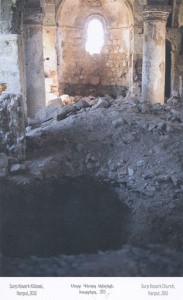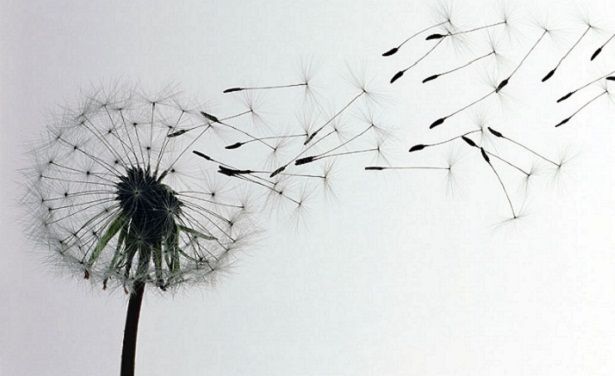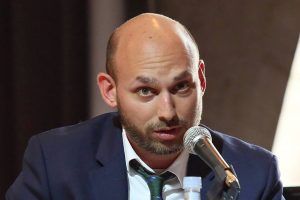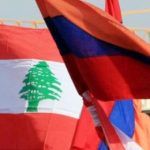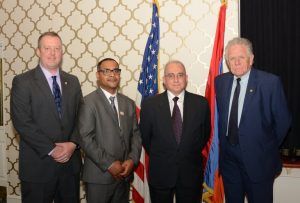Grandfather’s house in Turkey turned into hotel

“It’s painful to see the constant destruction of Armenian churches and to see how the Kurds and Turks still search for gold there. When I went, they asked me if I had a map. I told them I didn’t have a map and am not in search of gold, but I must say that the gold is not underneath the land, these stones and people are gold. They looked at me and didn’t understand what I meant, but I told them that these stones serve as facts, they are my bones and that I had come after them. It’s sad to walk in the church and see 4-5 meter deep holes,” Brazilian-Armenian photographer Norair Shahinian said as he shared his impressions in an interview with Aravot Daily.
The photographer first visited Turkey, particularly the land of his ancestors in 2012 with the mission to fulfill the commandment of his grandfather Avedis Shahinian, who was also a photographer. His grandfather had told him to go, take photos and show those photos to the world. Norair was born and raised in São Paulo and attended an Armenian school. He speaks Armenian fluently thanks to the fact that he was born to a family where Armenian was the household language. He inherited his talent from his grandfather, who left Marash city of Western Armenia during the Armenian Genocide of 1915, settled in Aleppo and founded his photo studio.
During the visit to Turkey, Norair visited his grandfather’s house and saw that it had been turned into a hotel run by a Turkish woman. However, the woman hadn’t touched the wall of one of the suites since there was writing on that wall. As Norair says, the businesswoman had thought that the inheritors of the owners of this house would come, and she wasn’t wrong. “I wrote this in 1922 I stayed at Nshan Efendi’s house for 25 days now I leave for Hela Aleppo, wish you well friends whoever reads this let him or her remember me as Petros…Ter…p…Ian.” After reading this, Norair said he could barely hold back his tears.
Norair Shahinian said that when he first set foot in Turkey, the only things that he had at his disposal was the address of Agos Weekly’s editorial office and the telephone number of one of the newspaper’s founders Sargis Serobian. “He helped me a lot. We traveled to cities and villages. I faced problems when I found the writing for the first time. This caused uproar in Turkey. There were articles about me, and there were people who were following me.”
Since 2012, Norair has been visiting Turkey for several months to complete his study. The local Armenian community helped him a lot. He has compiled his work in a book and has published 1,500 copies in three languages, including Armenian, Turkish and English. In this book entitled “The Power of Emptiness”, the photographer has presented the destroyed homes and churches of Armenians, dilapidated schools and the lives that changed for many people. “I ask myself why this happened, what happened to the people who used to live, pray and study here,” says Norair. The title of several of his photos is “The Plan Failed”. The photos show how the Turks failed to leave one Armenian and in a museum at that.
Visiting Vagifl, the last Armenian village in Turkey, Norair found and photographed 25 old Armenian men who announced the following when refusing to leave their homes during the attack on Kessab last year: “Massacre us, but we want to die in Kessab.” According to Norair, those men were gathered and brought to Vagifl village, which is close to the Turkish border. This is the village of the Armenians of Musaler where there are 250 Armenians. They have a church, and the villagers looked after those old men for 50 days. “My meeting with one of them was very touching since he was also a photographer. When he told me how he had visited my grandfather’s photo studio, I was moved.”
Norair has taken a photo of a 95-year-old woman named Pakritchioglu, whose ancestors were also victims of the Armenian Genocide, leaving her as an orphan. According to Norair, the woman grew up among Kurds, but her fifth generation didn’t assimilate and preserved the Armenian identity. Norair has also taken a photo of her family members who live under one roof in Kakhta. Before visiting Turkey, Norair had a fear. “We were raised with fear in Brazil. We were told that whenever we see a Turk, we have to burn the Turkish flag. We were also told that if Turks see us, they would kill us, and if we saw them, we had to kill them. Before visiting Turkey, I was a little afraid. However, since I have traveled a lot and love turning fear into adrenaline, I went. I didn’t think about such things. We need to preserve the Armenian identity outside of Armenia as well. There were Armenians who would walk around with crosses on their necks and said they were Christian.”
According to Norair, his goal is to have the world and especially his generation, see and recognize what happened. “Go to Turkey and establish relations with the people of that country, including photographers and historians. There are many Turks who acknowledge the Armenian Genocide and say it’s a shame for the Turkish government to deny it. The centennial will pass and will be followed by the 101st anniversary and the 102nd anniversary, but that won’t change anything. We need to go there and grow in number. The important thing is what I’ve seen over these past couple of years. I saw that there used to be 1,000 Armenians who would speak out on the day commemorating the Armenian Genocide in Turkey, and now there were 10,000 Armenians.”
Norair Shahinian’s photos were showcased in Turkey on April 23. Norair will be holding his personal exhibition in Armenia in September.
ANUSH MATEVOSYAN
Aravot Daily




 Արևելահայերեն
Արևելահայերեն Արևմտահայերեն
Արևմտահայերեն Русский
Русский